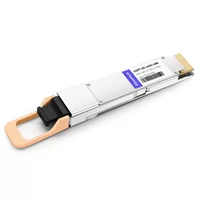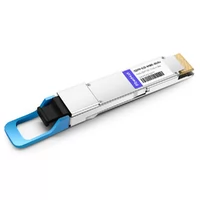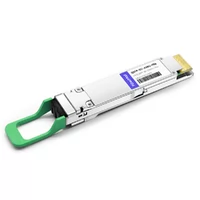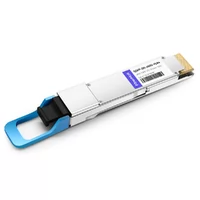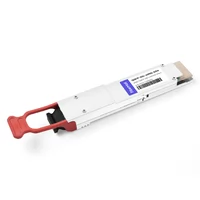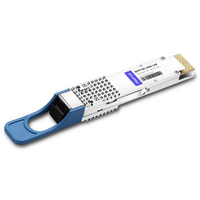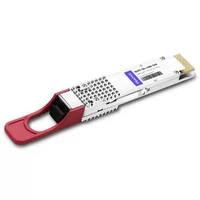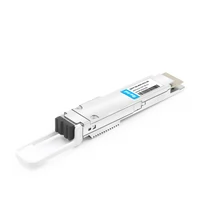The 400G optical transceivers are born to adapt to the network market of 25G, 40G to 100G, 200G, 400G and even 1T. 400G optical transceivers play an important role in building 400G network system. In terms of optical wavelength, 400G optical transceivers can be divided into multi-mode (MM) and single-mode (SM); In terms of signal modulation mode, they’re divided into NRZ and PAM4 modulation (mainly PAM4 at present); In terms of transmission distance, they can be divided into SR, DR, FR and LR; In terms of form factor, they can be divided into OSFP, QSFP-DD, CFP8, CWDM8, CDFP, COBO.
Table of Contents
Toggle1. What are the form-factors of 400G optical transceivers?
- OSFP(Octal Small Form–factor Pluggable)
The 400G OSFP module is applied for a new interface standard, which is incompatible with the existing photoelectric interface. With dimensions of 100.4 * 22.58 * 13^3 mm, it is slightly larger than the QSFP-DD and requires a larger PCB area. The OSFP transceiver is a new pluggable form factor with eight high speed electrical lanes that supports 400 Gbps (8x50G). The OSFP has an integrated heat-sink that greatly improves thermal performance and enables modules with up to 15W power in a switch chassis with conventional airflow.
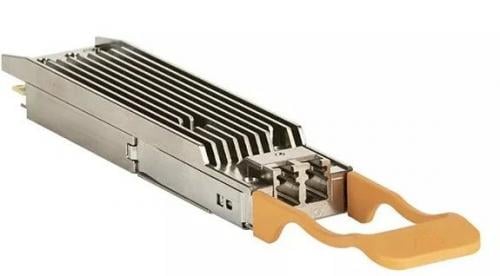
- QSFP-DD(Quad Small Form Factor Pluggable Double Density)
The 400G QSFP-DD optical transceiver is an extension of the QSFP interface, doubling the original 4-channel interface to 8-channel, that is, the so-called double density. The module is compatible with the existing QSFP28 optical module and QSFP28 AOC/DAC, which is one of its main advantages. The electrical interface of QSFP-DD adopts 8 channels, and the rate of each channel is up to 25Gb/s (NRZ modulation) or 50Gb/s (PAM4 modulation), providing solutions up to 200G or 400G. The bandwidth of QSFP-DD can be up to ten times that of QSFP+ or four times that of QSFP28. The form factors of 400G QSFP-DD optical module mainly include 400G DR4, 400G FR4, 400G LR4 and 400G SR8. Among them, the 400G SR8 transceiver meets the IEEE 802.3cm standard and the requirements of 70m OM3 and 100m OM4/OM5 transmission links, uses 16 core multimode MPO connectors, with 8 transmitters and 8 receivers, and carries 50Gbps signal when each channel is modulated by PAM4. Meanwhile, 400G SR8 has price advantage by using VCSEL laser.

Compared to 400G OSFP, 400G QSFP-DD is half the size, and it currently only supports up to 400Gb/s, but OSFP can support up to 800Gb/s. QSFP-DD is mainly for the current 400G networks that will be deployed on a large scale, while OSFP is more likely to be for future 800G networks. So, combined with the current status, QSFP-DD is more suitable for 400G network.
- CFP8
The CFP8 is an extension of the CFP4, which increases the number of channels to 8 and the size to 40 * 102 * 9.5^3 mm accordingly. the solution is more costly and requires the use of sixteen pieces of 25G lasers. the CFP8 is more than 3 times the size of the QSFP-DD. Since the CFP series of optical modules is mainly used for carrier-grade applications where port density requirements are not as high as in data centers, the CFP8 supports only 400Gb/s (16x25G or 8x50G). While QSFP-DD supports both 200Gb/s (8x25G) and 400Gb/s (8x50G), which is more suitable for short-distance cabling in the data centers.
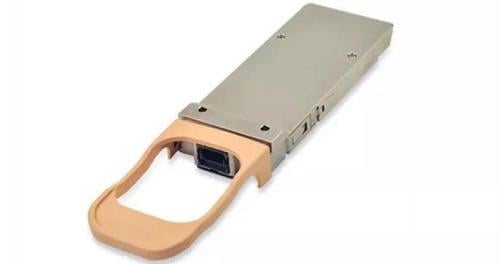
- CWDM8
The 400G CWDM8 module is an extension of the CWDM4 standard with a rate of 50G per wavelength. It has four central wavelengths, namely 1351/1371/1391/1411nm. Its wavelength range becomes wider, the requirements for MUX / DeMux are higher, the number of lasers is doubled, and the maximum input power is 8.5dBm.
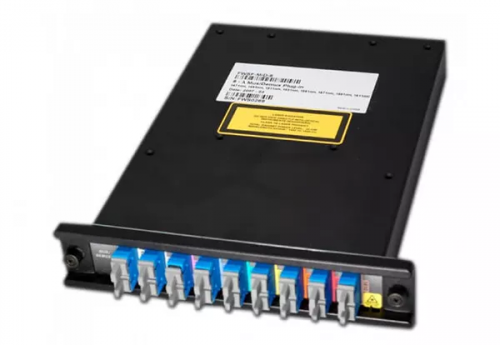
- CDFP
The 400G CDFP standard was born earlier and so far the third version of the specification has been released. It is the first 16x25G= 400G larger size module. It uses 16 channels with a single channel rate of 25G. Due to the large number of channels, the size is also relatively large.
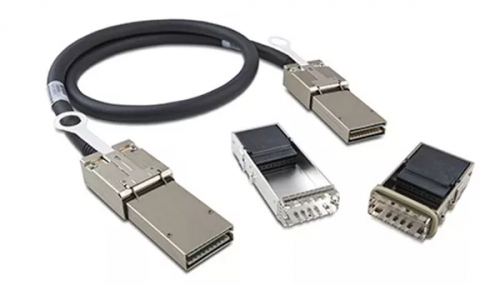
- COBO(Consortium for On Board Optics)
COBO means that all the optical components are placed on the PCB. The main advantages of this module are good heat dissipation and small size. However, since hot-swapping is not supported, it will be difficult to repair once a part fails.
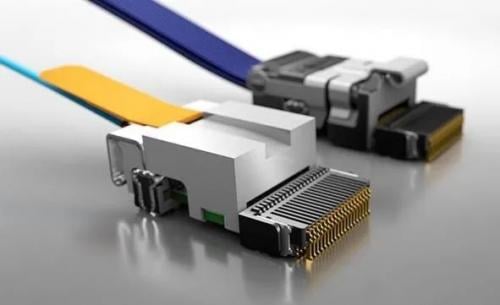
Among the above 400G optical transceiver packaging forms, QSFP-DD and OSFP are the more mainstream ones.
2. What’s the difference of 400G and 10G/25G/40G/100G/200G optical transceivers?
Compared with 10G, 25G, 40G, 100G optical modules, the arrival of 400G optical modules will bring optical communication into a new era. Optical communication is changing from single-carrier coherent detection in low-end optical modules to polarization multiplexing multi-carrier applications. Photonic integration and electronic integration, ADC/DSP technology will be the key to the commercialization of 400G optical communication system. With the urgent need for Ethernet standardization, the demand for optical parallelization will greatly facilitate the development of photonic integration technology. Although only one optical chip is used in 400G optical modules, the cost is high:in 10G/25G optical modules, the cost of optical chip accounts for about 30%; in 40G/100G optical modules, the cost of optical chip accounts for about 50%; and in 400G optical modules, the cost of optical chip is as high as 70%. Although 10G, 25G, 40G and even 100G optical modules have become the mainstream of the market, but with the increasing requirements for bandwidth, port density and system energy consumption, 400G optical modules will further push the technology to a higher level of development.
Compared to 200G optical modules, the more mainstream form factor of 400G optical modules is 400G QSFP-DD, while 200G optical modules are also available in QSFP-DD forms, but the more mainstream is the 200G QSFP56. Since the OEMs (Original Equipment Manufacturers) and the third-party module vendors are now vigorously developing and producing 200G optical modules in order to compete for emerging markets, making 200G optical modules cheaper to purchase. Therefore, a data center with a tight budget can postpone the more expensive 400G upgrade to a later date and take the 200G intermediate option.
3. Summary
The primary function of 400G optical transceivers is to increase data throughput and maximize bandwidth and port density in data centers. The demand for bandwidth in mega data centers is growing, and in the future, 400G optical modules will be the best choice to improve system performance and reduce bandwidth costs. Moreover, the emergence of 5G networks will be another positive factor to promote the market value of 400G optical transceivers.
Related Products:
-
 QSFP-DD-400G-SR8 400G QSFP-DD SR8 PAM4 850nm 100m MTP/MPO OM3 FEC Optical Transceiver Module
$149.00
QSFP-DD-400G-SR8 400G QSFP-DD SR8 PAM4 850nm 100m MTP/MPO OM3 FEC Optical Transceiver Module
$149.00
-
 QSFP-DD-400G-DR4 400G QSFP-DD DR4 PAM4 1310nm 500m MTP/MPO SMF FEC Optical Transceiver Module
$400.00
QSFP-DD-400G-DR4 400G QSFP-DD DR4 PAM4 1310nm 500m MTP/MPO SMF FEC Optical Transceiver Module
$400.00
-
 QSFP-DD-400G-XDR4 400G QSFP-DD XDR4 PAM4 1310nm 2km MTP/MPO-12 SMF FEC Optical Transceiver Module
$580.00
QSFP-DD-400G-XDR4 400G QSFP-DD XDR4 PAM4 1310nm 2km MTP/MPO-12 SMF FEC Optical Transceiver Module
$580.00
-
 QSFP-DD-400G-FR4 400G QSFP-DD FR4 PAM4 CWDM4 2km LC SMF FEC Optical Transceiver Module
$500.00
QSFP-DD-400G-FR4 400G QSFP-DD FR4 PAM4 CWDM4 2km LC SMF FEC Optical Transceiver Module
$500.00
-
 QSFP-DD-400G-LR4 400G QSFP-DD LR4 PAM4 CWDM4 10km LC SMF FEC Optical Transceiver Module
$600.00
QSFP-DD-400G-LR4 400G QSFP-DD LR4 PAM4 CWDM4 10km LC SMF FEC Optical Transceiver Module
$600.00
-
 QSFP-DD-400G-PLR4 400G QSFP-DD PLR4 PAM4 1310nm 10km MTP/MPO-12 SMF FEC Optical Transceiver Module
$1000.00
QSFP-DD-400G-PLR4 400G QSFP-DD PLR4 PAM4 1310nm 10km MTP/MPO-12 SMF FEC Optical Transceiver Module
$1000.00
-
 QSFP-DD-400G-ER4 400G QSFP-DD ER4 PAM4 LWDM4 40km LC SMF without FEC Optical Transceiver Module
$3500.00
QSFP-DD-400G-ER4 400G QSFP-DD ER4 PAM4 LWDM4 40km LC SMF without FEC Optical Transceiver Module
$3500.00
-
 QSFP-DD-400G-LR8 400G QSFP-DD LR8 PAM4 LWDM8 10km LC SMF FEC Optical Transceiver Module
$2500.00
QSFP-DD-400G-LR8 400G QSFP-DD LR8 PAM4 LWDM8 10km LC SMF FEC Optical Transceiver Module
$2500.00
-
 QSFP-DD-400G-ER8 400G QSFP-DD ER8 PAM4 LWDM8 40km LC SMF FEC Optical Transceiver Module
$3800.00
QSFP-DD-400G-ER8 400G QSFP-DD ER8 PAM4 LWDM8 40km LC SMF FEC Optical Transceiver Module
$3800.00
-
 QSFP-DD-400G-DCO-ZR 400G Coherent QSFP-DD DCO C-band Tunable Optical Transceiver Module
$6000.00
QSFP-DD-400G-DCO-ZR 400G Coherent QSFP-DD DCO C-band Tunable Optical Transceiver Module
$6000.00

